Rare Panda German Shepherd Puppies
The Panda German Shepherd represents one of the most striking and rare color variations within the German Shepherd breed. With their distinctive black and white markings reminiscent of a panda bear, these extraordinary dogs capture attention wherever they go. While maintaining all the beloved characteristics of traditional German Shepherds, Panda German Shepherds offer a unique aesthetic that makes them truly special companions.
Understanding the genetics, care requirements, and characteristics of Panda German Shepherd puppies is essential for anyone considering adding one of these remarkable dogs to their family. This comprehensive guide will explore everything you need to know about these rare and beautiful animals.
What Makes a Panda German Shepherd Special?
The Panda German Shepherd is not a separate breed but rather a rare genetic variation of the traditional German Shepherd. This unique coloring pattern occurs due to a specific genetic mutation that affects pigmentation, resulting in the distinctive black and white markings that give these dogs their “panda” appearance.
First documented in the early 2000s, Panda German Shepherds remain extremely rare, making them highly sought after by dog enthusiasts and collectors. Despite their unusual coloring, these dogs possess all the intelligence, loyalty, and working ability that German Shepherds are famous for.

Appearance: The Distinctive Panda Look
The most striking feature of Panda German Shepherd puppies is their unique coat coloration. These dogs typically display a predominantly black coat with distinctive white markings that create their signature “panda” appearance.
Coat Pattern: The white markings usually appear on the face, chest, legs, and sometimes the tail tip. The pattern can vary from dog to dog, but the most desirable Panda German Shepherds have symmetrical white facial markings that resemble a panda’s face, along with white chest blazes and leg markings.
Size and Build: Panda German Shepherds maintain the same size and build as traditional German Shepherds. Males typically weigh between 65-90 pounds and stand 24-26 inches tall, while females weigh 50-70 pounds and stand 22-24 inches tall.
Coat Texture: Like other German Shepherds, Pandas have a double coat with a dense undercoat and longer outer guard hairs. The coat texture remains the same regardless of color variation.
Eyes and Features: Most Panda German Shepherds have dark brown eyes, though some may have lighter colored eyes due to the genetic factors affecting their coat color. Their ears are erect and pointed, and they maintain the classic German Shepherd head shape and expression.
Personality and Temperament
The personality and temperament of Panda German Shepherd puppies mirror those of traditional German Shepherds, as the genetic mutation affecting their coat color does not influence their behavioral characteristics.
Intelligence: Panda German Shepherds are exceptionally intelligent dogs, ranking among the top breeds for trainability and problem-solving abilities. They excel at learning complex commands and tasks.
Loyalty: These dogs form strong bonds with their families and are known for their unwavering loyalty and devotion. They often choose one family member as their primary person while remaining affectionate with all family members.
Protective Instincts: Panda German Shepherds possess the same natural protective instincts as their traditionally colored counterparts. They make excellent watchdogs and will alert their families to potential threats.
Energy Level: These dogs have high energy levels and require substantial physical and mental stimulation to remain happy and well-behaved. They thrive on having jobs to do and purposes to fulfill.
Social Nature: With proper socialization, Panda German Shepherds are confident and well-adjusted dogs. They can be initially reserved with strangers but warm up quickly when properly introduced.
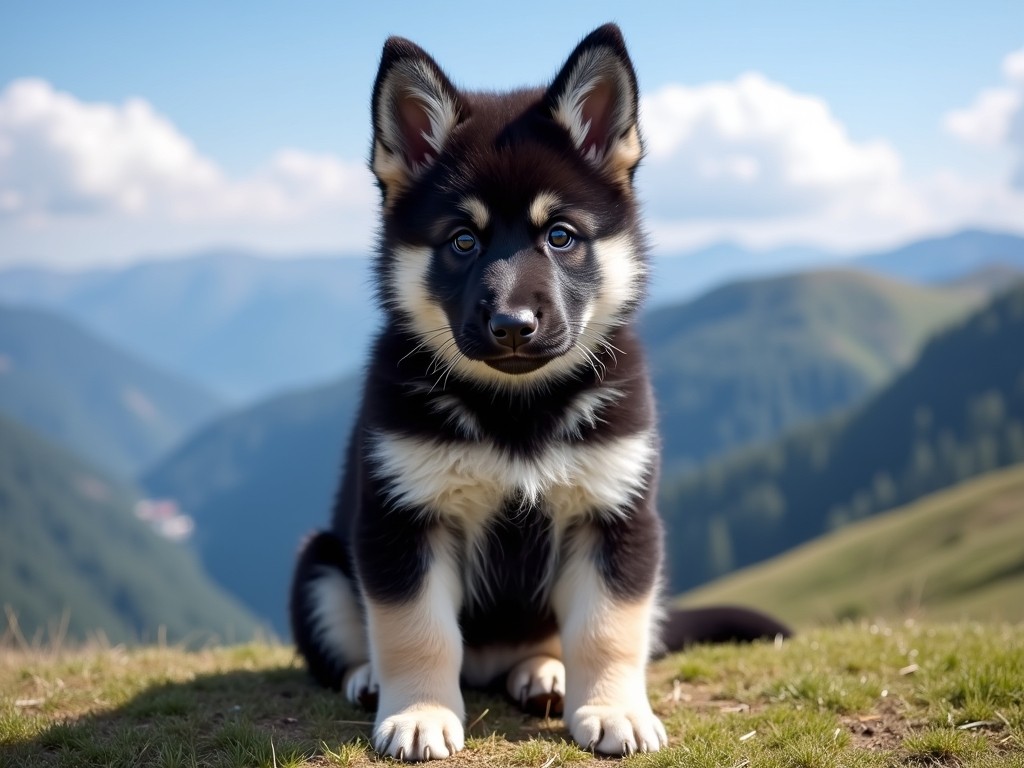
Grooming Requirements
Grooming a Panda German Shepherd requires the same attention as any double-coated German Shepherd, with some additional considerations for maintaining their distinctive white markings.
Regular Brushing: Daily brushing helps manage shedding and prevents matting. Use a high-quality slicker brush and undercoat rake to thoroughly work through both coat layers.
Seasonal Shedding: Panda German Shepherds experience seasonal “coat blows” twice yearly, during which they shed their undercoat heavily. During these periods, daily brushing becomes even more critical.
Bathing: Bathe your Panda German Shepherd every 6-8 weeks or as needed. Use dog-specific shampoos that won’t strip natural oils. The white areas may require more frequent attention to maintain their bright appearance.
Nail Care: Trim nails every 2-3 weeks to prevent overgrowth and discomfort. Regular nail maintenance is essential for active dogs.
Ear Cleaning: Clean ears weekly with appropriate ear cleaning solutions to prevent infections and maintain good ear health.
Dental Hygiene: Brush teeth regularly and provide appropriate chew toys to maintain dental health.
General Care and Living Requirements
Caring for Panda German Shepherd puppies requires understanding their needs as both puppies and as German Shepherds with high energy and intelligence requirements.
Living Space: While Panda German Shepherds can adapt to various living situations, they thrive best in homes with secure yards where they can run and explore safely. Apartment living is possible but requires significantly more exercise and mental stimulation.
Climate Considerations: Their double coat provides good insulation against cold weather, but they can struggle in extremely hot climates. Provide adequate shade and fresh water during warm weather.
Safety: Secure fencing is essential as German Shepherds are athletic and can jump high fences. The yard should be escape-proof to prevent wandering.
Socialization Needs: Early and ongoing socialization is crucial for developing a well-rounded adult dog. Expose puppies to various people, animals, sounds, and environments.
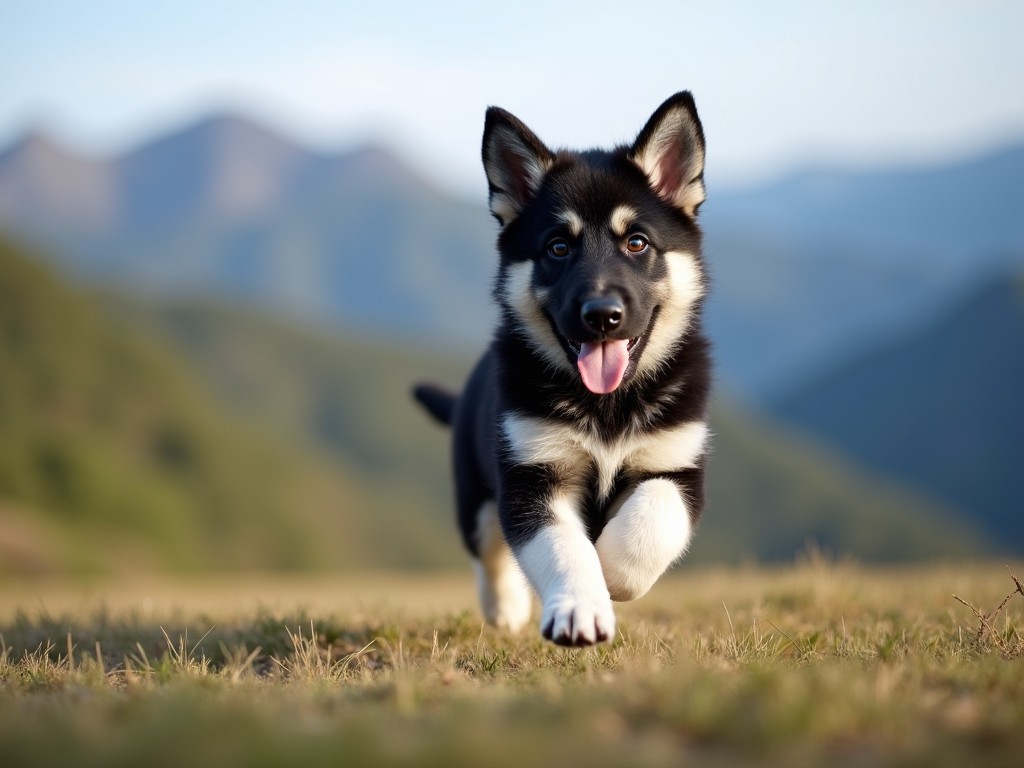
Health Considerations
Panda German Shepherd puppies are generally as healthy as traditional German Shepherds, though potential owners should be aware of breed-specific health concerns and considerations related to their unique genetics.
Hip and Elbow Dysplasia: Like all German Shepherds, Pandas can be prone to joint dysplasia. Reputable breeders screen breeding dogs for these conditions.
Bloat (Gastric Dilatation-Volvulus): This life-threatening condition can affect deep-chested breeds like German Shepherds. Feeding smaller, frequent meals and avoiding exercise immediately after eating can help reduce risk.
Degenerative Myelopathy: This progressive spinal cord disease can affect German Shepherds in their later years. Genetic testing can identify carriers.
Skin Sensitivity: Some Panda German Shepherds may have slightly more sensitive skin due to their genetic makeup, particularly in the white-marked areas. Regular grooming and quality diet help maintain healthy skin.
Eye Health: Regular eye examinations are important, as some color-dilution genes can occasionally be associated with eye sensitivities.
Regular Veterinary Care: Maintain regular checkups, vaccinations, and preventive care to ensure optimal health throughout your dog’s life.
Feeding and Nutrition
Proper nutrition is essential for Panda German Shepherd puppies to develop into healthy, strong adults. Their nutritional needs are the same as other German Shepherds.
Puppy Nutrition: Feed high-quality puppy food formulated for large breed dogs. These formulas support proper bone and joint development while providing adequate nutrition for growth.
Feeding Schedule: Puppies should eat 3-4 times daily until 6 months old, then transition to twice daily feeding. Adult dogs typically eat twice daily.
Portion Control: Monitor portion sizes carefully to prevent overeating and obesity, which can stress developing joints and contribute to health problems.
Quality Ingredients: Choose foods with high-quality protein sources, appropriate fat levels, and essential vitamins and minerals. Avoid foods with excessive fillers or artificial additives.
Life Stage Nutrition: Transition from puppy to adult food around 12-18 months, and consider senior formulas as your dog ages.
Fresh Water: Provide constant access to fresh, clean water to support proper hydration and overall health.
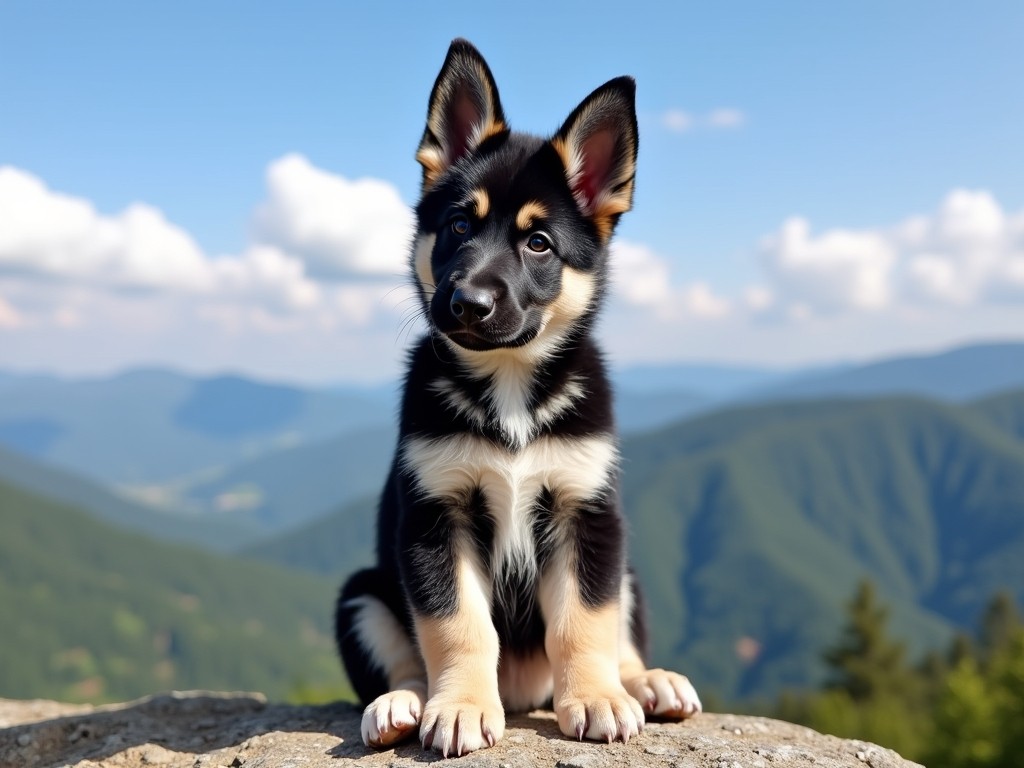
Exercise Requirements
Panda German Shepherd puppies grow into high-energy adults that require substantial daily exercise to maintain physical and mental health.
Daily Exercise Needs: Adult Panda German Shepherds need 2-3 hours of exercise daily, including walks, runs, play time, and mental stimulation activities.
Puppy Exercise: Young puppies should have shorter, more frequent play sessions. Avoid forced exercise like long runs until growth plates close around 18-24 months.
Mental Stimulation: Provide puzzle toys, training sessions, and problem-solving activities to challenge their intelligent minds. Mental exercise is as important as physical activity.
Variety: Mix different types of activities including walking, running, swimming, fetch, agility training, and interactive games to prevent boredom.
Weather Considerations: Adjust exercise intensity and duration based on weather conditions. Provide adequate rest and water during hot weather.
Training Your Panda German Shepherd
Training Panda German Shepherd puppies is both rewarding and essential due to their intelligence, size, and energy levels.
Early Start: Begin training immediately when you bring your puppy home. German Shepherds are most receptive to learning during their early months.
Positive Reinforcement: Use reward-based training methods including treats, praise, and play. These intelligent dogs respond excellently to positive reinforcement.
Consistency: Maintain consistent rules and expectations across all family members. Mixed messages can confuse intelligent dogs and slow training progress.
Basic Commands: Start with essential commands like sit, stay, come, down, and heel. These form the foundation for more advanced training.
Socialization Training: Expose your puppy to various people, animals, and situations while rewarding calm, appropriate behavior.
House Training: Establish consistent routines for feeding, exercise, and bathroom breaks. Most German Shepherd puppies can be house trained relatively quickly with consistency.
Advanced Training: Once basic commands are mastered, consider advanced training like agility, tracking, or specialized work training to challenge their minds.
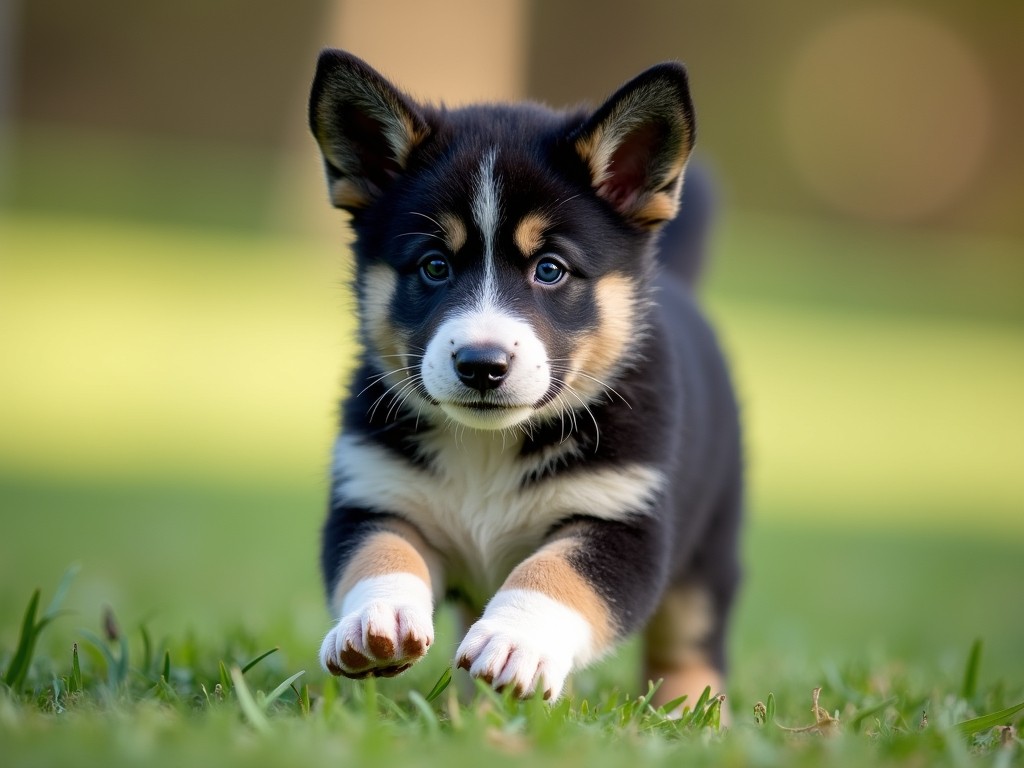
Pros of Owning a Panda German Shepherd
Unique Appearance: The rare and striking panda coloring makes these dogs true conversation starters and head-turners wherever you go.
Same Great Temperament: You get all the wonderful German Shepherd personality traits in a uniquely colored package.
Intelligent and Trainable: Like all German Shepherds, Pandas are highly intelligent and excel at training and learning complex tasks.
Loyal Companions: These dogs form incredibly strong bonds with their families and are devoted, loving companions.
Excellent Watchdogs: Their natural protective instincts make them excellent guardians for families and property.
Versatile: Panda German Shepherds can excel in various roles from family pet to working dog, therapy dog, or sport companion.
Rarity Value: The uniqueness of the panda coloring makes these dogs special and often increases their value as companions.
Cons of Owning a Panda German Shepherd
High Exercise Needs: These dogs require significant daily exercise and mental stimulation, which may not suit all lifestyles.
Heavy Shedding: Like all German Shepherds, Pandas shed considerably and require regular grooming maintenance.
Size and Strength: Large, powerful dogs require experienced handling and proper training to manage safely.
Potential Health Issues: German Shepherds can be prone to certain genetic health conditions that require ongoing veterinary care.
High Cost: The rarity of Panda German Shepherds often makes them more expensive than traditionally colored German Shepherds.
Limited Availability: Finding reputable breeders with Panda German Shepherd puppies can be challenging due to their rarity.
Grooming Maintenance: The white markings may require more frequent cleaning and maintenance to keep them looking their best.

Are Panda German Shepherds Good with Kids?
Panda German Shepherds can be excellent family dogs and wonderful with children when properly socialized and trained from an early age.
Natural Protectiveness: These dogs often develop strong protective instincts toward children in their family, making them excellent guardians and companions.
Gentle Giants: Despite their size and strength, well-socialized Panda German Shepherds can be remarkably gentle with children, often seeming to understand their fragility.
Playful Nature: German Shepherds enjoy interactive play and can be wonderful playmates for active children who understand how to interact respectfully with dogs.
Teaching Opportunities: These intelligent dogs provide excellent opportunities to teach children about responsible pet ownership, empathy, and animal care.
Supervision Required: As with any large breed, interactions between Panda German Shepherds and young children should always be supervised to ensure safety for both.
Training Importance: Proper training is essential to ensure the dog learns appropriate boundaries and behavior around children of all ages.
Early Socialization: Exposing puppies to children of various ages during their critical socialization period helps develop appropriate responses and comfort levels.
Finding Your Panda German Shepherd Puppy
Due to the rarity of Panda German Shepherds, finding a reputable breeder with available puppies requires patience and careful research.
Breeder Research: Look for breeders who health test their breeding stock, provide health guarantees, and prioritize temperament alongside appearance.
Genetic Testing: Reputable breeders should conduct genetic testing to understand the inheritance patterns and ensure healthy breeding practices.
Waiting Lists: Due to rarity, most reputable breeders maintain waiting lists for Panda German Shepherd puppies.
Health Documentation: Ensure breeders provide complete health records, vaccination information, and genetic testing results for parent dogs.
We here at German Shepherd Puppies NC take great pride in breeding the best German Shepherd puppies in all of North Carolina. As North Carolina’s premier German Shepherd experts, German Shepherd Puppies NC has been breeding award-winning AKC quality German Shepherd puppies since 1991. Whether you’re looking for black German Shepherd puppies, white puppies, blue puppies, sable puppies, or long-haired puppies, we have the expertise and commitment to excellence that ensures each puppy is raised with proper socialization, health screening, and the foundation for becoming an exceptional family companion.
If you would like to request a Panda German Shepherd puppy, please contact us as we would be glad to discuss availability and help you understand more about these remarkable and rare dogs. Our decades of experience in breeding German Shepherds gives us unique insights into the genetics and care requirements of special color variations like the Panda pattern.
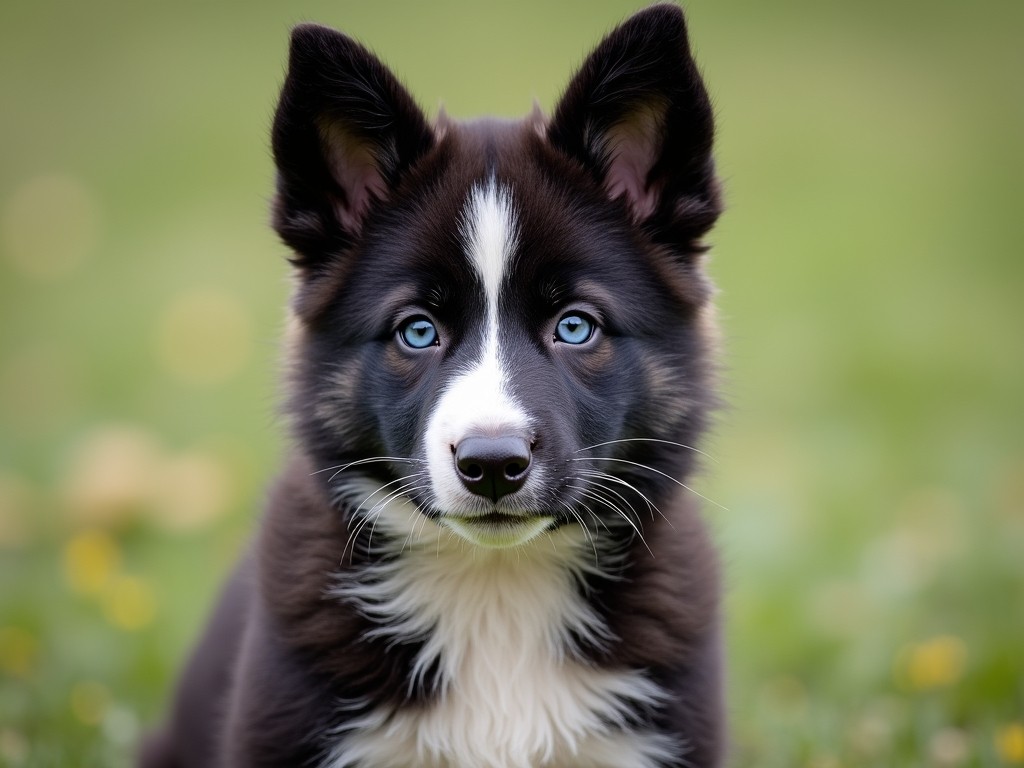
The Investment in Excellence
Choosing a Panda German Shepherd puppy represents a significant investment in both time and resources, but the rewards of sharing your life with one of these extraordinary dogs are immeasurable.
Long-term Commitment: German Shepherds typically live 9-13 years, representing a long-term commitment that should be carefully considered.
Financial Investment: Beyond the initial purchase price, consider ongoing costs including food, veterinary care, grooming, training, and supplies.
Time Investment: These dogs require significant daily time investment for exercise, training, grooming, and companionship.
Lifestyle Compatibility: Ensure your lifestyle can accommodate the needs of an active, intelligent, large breed dog for their entire lifetime.
Conclusion
Panda German Shepherd puppies represent a unique and extraordinary variation of one of the world’s most beloved dog breeds. With their striking appearance and wonderful German Shepherd temperament, these rare dogs make exceptional companions for the right families.
Success with a Panda German Shepherd requires understanding their needs, providing proper training and socialization, and committing to their long-term care and well-being. When these requirements are met, Panda German Shepherds reward their families with unwavering loyalty, intelligence, and companionship that lasts a lifetime.
For those interested in adding one of these remarkable dogs to their family, working with experienced, reputable breeders is essential. If you are looking for German Shepherd puppies for sale near me, then look no further than German Shepherd Puppies NC. Our commitment to excellence in breeding, combined with our understanding of the German Shepherd’s unique characteristics, ensures that you’ll receive a puppy that’s been properly prepared for life as your family companion.
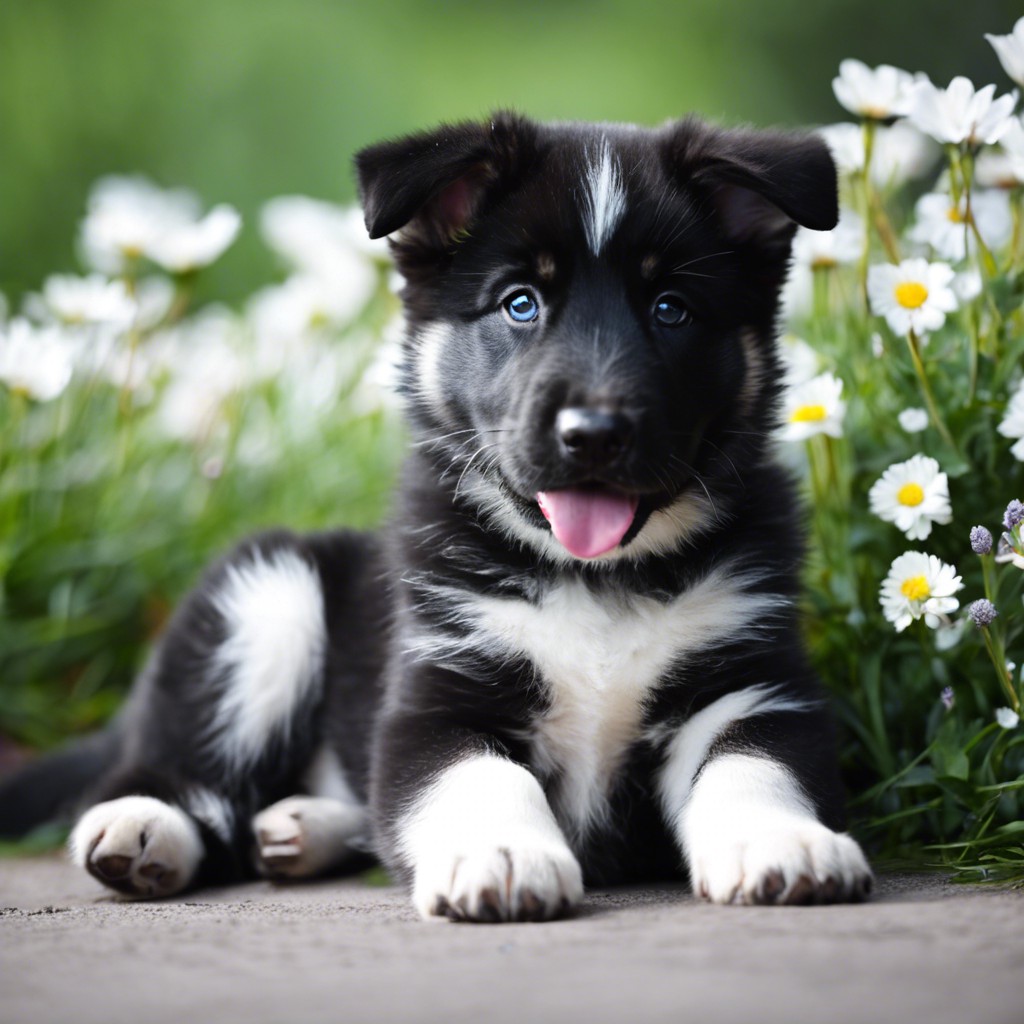
What Is The Bite Force of a German Shepherd?
The German Shepherd is renowned for its intelligence, loyalty, and versatility as both a family companion and working dog. One aspect that often sparks curiosity among dog enthusiasts and potential owners is the German Shepherd’s bite force. Understanding this characteristic can provide valuable insights into the breed’s capabilities and the importance of proper training and socialization.
German Shepherd Bite Force PSI: The Numbers
The German Shepherd’s bite force measures approximately 238 pounds per square inch (PSI). This impressive figure places the German Shepherd among the stronger-biting dog breeds, though it’s important to put this number into perspective. To understand what this means, consider that the average human bite force is around 162 PSI, making the German Shepherd’s bite significantly more powerful than our own.
This 238 PSI bite force is the result of the German Shepherd’s robust jaw structure, well-developed jaw muscles, and the breed’s overall physical build. The combination of their skull shape, muscle density, and jaw mechanics contributes to this remarkable biting capability.
Comparing German Shepherd Bite Force to Other Breeds
While 238 PSI is substantial, it’s worth noting how the German Shepherd compares to other popular breeds:
- Rottweiler: 328 PSI
- American Bulldog: 305 PSI
- German Shepherd: 238 PSI
- Doberman Pinscher: 245 PSI
- Pit Bull: 235 PSI
- Labrador Retriever: 230 PSI
The German Shepherd’s bite force sits comfortably in the upper range among dog breeds, reflecting their heritage as working dogs bred for protection, herding, and various service roles.
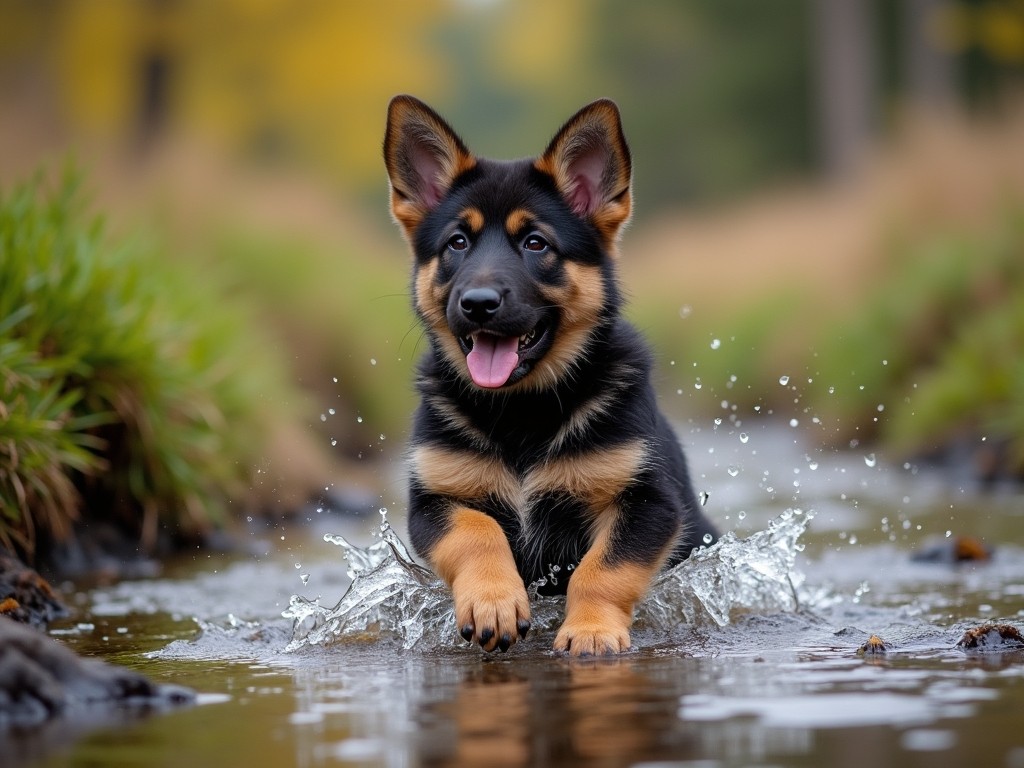
Factors Influencing Bite Force
Several factors contribute to an individual German Shepherd’s bite force:
- Size and Build: Larger German Shepherds typically have stronger bite forces than smaller ones. Adult males, being generally larger than females, often exhibit slightly higher PSI measurements.
- Age and Health: Young puppies and senior dogs may have reduced bite force compared to healthy adults in their prime. Dental health also plays a crucial role in bite effectiveness.
- Training and Conditioning: Dogs trained for protection work or those that regularly use their jaws for work-related activities may develop stronger jaw muscles over time.
- Genetics: Like many physical traits, bite force can vary based on genetic lineage and breeding quality.
The Purpose Behind the Power
The German Shepherd’s strong bite force isn’t merely a random trait – it serves several important purposes rooted in the breed’s history and function:
- Working Heritage: Originally bred for herding sheep, German Shepherds needed sufficient bite force to control livestock without causing harm. The bite had to be strong enough to be respected by sheep and cattle while controlled enough to avoid injury.
- Protection Capabilities: As the breed evolved into police and military work, their bite force became an asset in protection and apprehension work. The combination of strength and trainability made them ideal for these roles.
- Prey Drive and Hunting: German Shepherds retain some prey drive, and their bite force enables them to be effective in scenarios requiring capture and hold techniques.
Understanding Bite Inhibition and Training
Despite their impressive bite force, German Shepherds are known for their excellent bite inhibition when properly trained. Bite inhibition refers to a dog’s ability to control the pressure of their bite, and it’s a crucial skill that begins developing in puppyhood.
Proper socialization and training from an early age help German Shepherds learn to moderate their bite force in different situations. This is why working with reputable breeders who begin early socialization is so important for this breed.
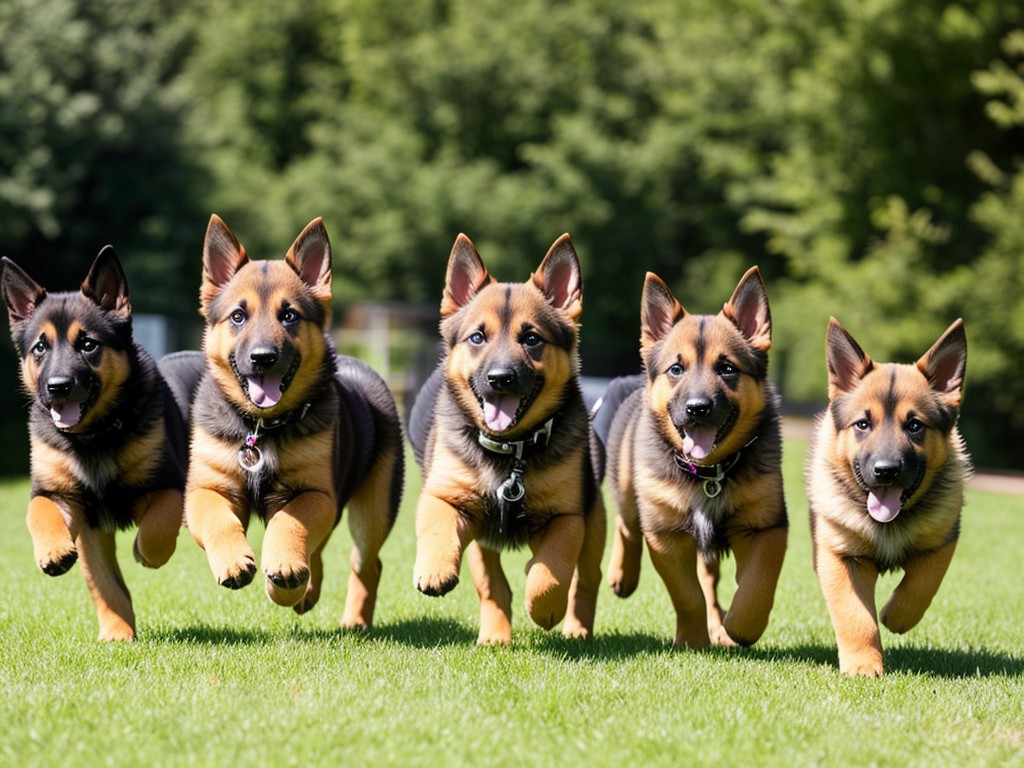
Safety Considerations and Responsible Ownership
Understanding your German Shepherd’s bite force capabilities comes with responsibilities:
- Early Socialization: Expose your German Shepherd puppy to various people, animals, and situations to ensure they develop appropriate social skills and bite inhibition.
- Consistent Training: Establish clear boundaries and commands, particularly around biting and mouthing behaviors. Even playful biting should be redirected to appropriate toys.
- Professional Guidance: Consider working with experienced dog trainers, especially if you plan to utilize your German Shepherd’s natural protection instincts.
- Secure Environment: Ensure your property is properly secured to prevent your German Shepherd from encountering situations where their protective instincts might be triggered inappropriately.
The Importance of Quality Breeding
The German Shepherd’s bite force, temperament, and overall behavior are significantly influenced by their genetic background and early development. This is where the expertise of established breeders becomes invaluable.
We here at German Shepherd Puppies NC understand the importance of breeding German Shepherds with not only impressive physical capabilities but also stable temperaments and proper socialization. As North Carolina’s premier German Shepherd experts, German Shepherd Puppies NC has been breeding the best German Shepherd puppies for sale in all of North Carolina since 1991.
Whether you’re looking for black German Shepherd puppies, white puppies, blue puppies, sable puppies, or long-haired puppies, we have the award-winning AKC quality German Shepherd puppy that is just right for you and your family. Our decades of experience ensure that each puppy is raised with proper socialization, health screening, and the foundation for developing appropriate bite inhibition and temperament.
Beyond the Bite: The Complete German Shepherd
While bite force is an interesting characteristic, it represents just one aspect of what makes German Shepherds exceptional dogs. Their intelligence, trainability, loyalty, and versatility are equally important traits that have made them one of the world’s most popular breeds.
A well-bred German Shepherd with proper training and socialization will use their impressive bite force responsibly and only when appropriate. They can be gentle family companions who know when to be protective and when to be playful.
Finding Your German Shepherd Puppy
If you’re considering adding a German Shepherd to your family and want to ensure you’re getting a puppy with the best possible genetic foundation and early development, it’s crucial to work with experienced, reputable breeders.
If you are looking for German Shepherd puppies for sale near me, then look no further than German Shepherd Puppies NC. Our commitment to excellence in breeding, combined with our understanding of the German Shepherd’s unique characteristics including their bite force capabilities, ensures that you’ll receive a puppy that’s been properly prepared for life as your family companion.
For those interested in learning more about German Shepherd puppies and finding the perfect addition to their family, we encourage you to reach out to us here at German Shepherd Puppies NC. We would be glad to help you understand more about this remarkable breed and assist you in finding the ideal German Shepherd puppy for your specific needs and lifestyle.
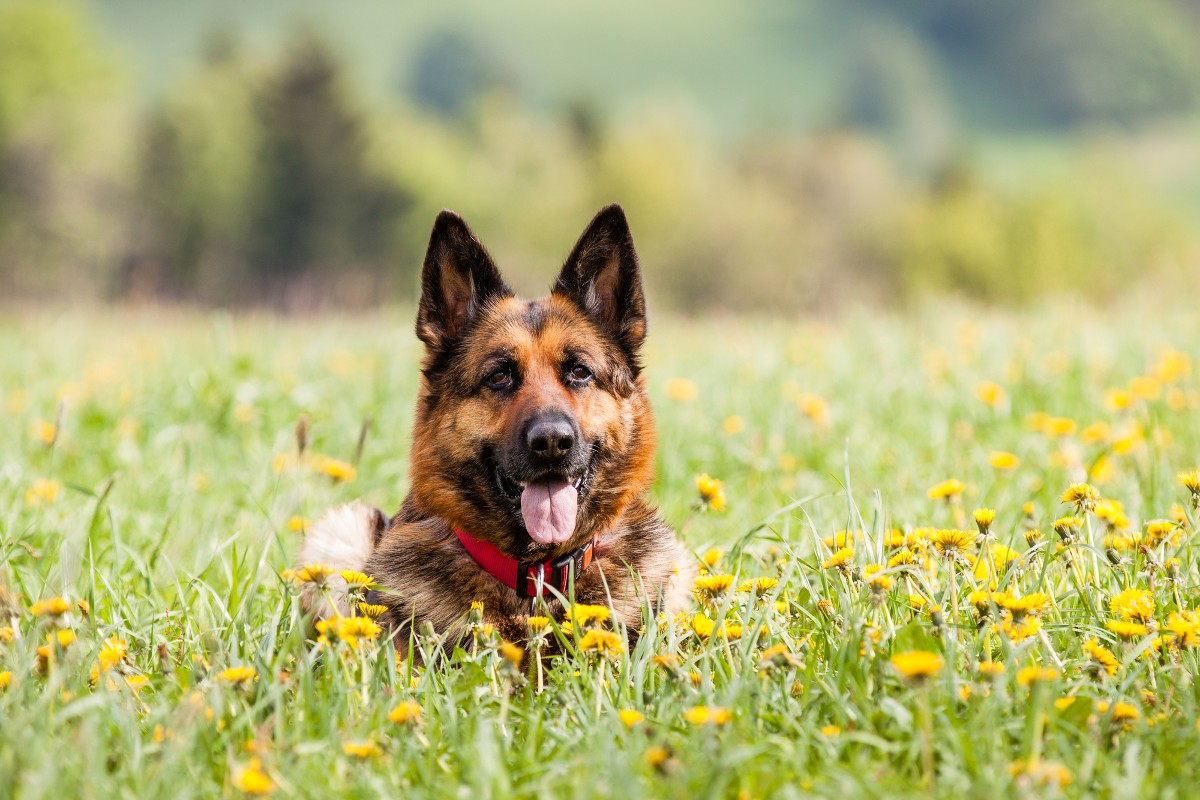
Conclusion
The German Shepherd’s bite force of approximately 238 PSI is a testament to the breed’s strength and working heritage. However, this power comes with the responsibility of proper breeding, training, and socialization. When these elements are combined with the German Shepherd’s natural intelligence and loyalty, the result is a dog that can be both a gentle family companion and a capable protector when needed.
Understanding your German Shepherd’s capabilities, including their bite force, helps you become a more informed and responsible owner. With proper care, training, and socialization from reputable breeders, your German Shepherd will be a wonderful addition to your family for years to come.


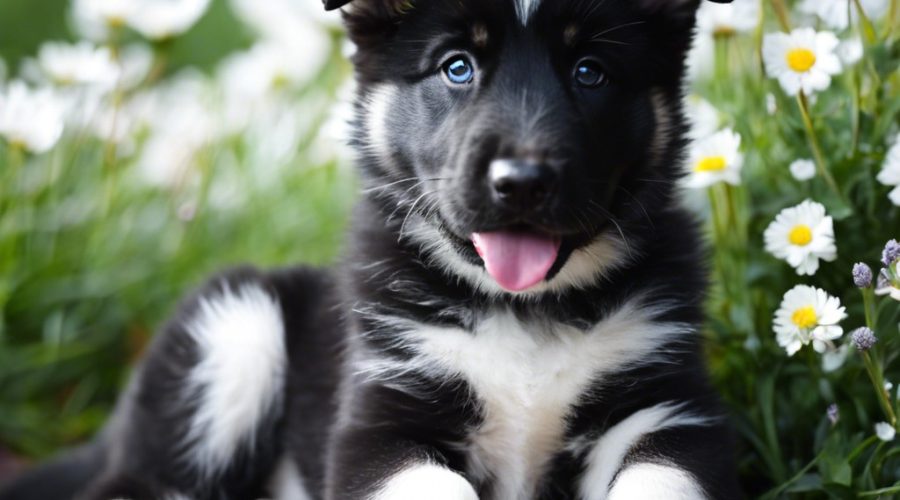
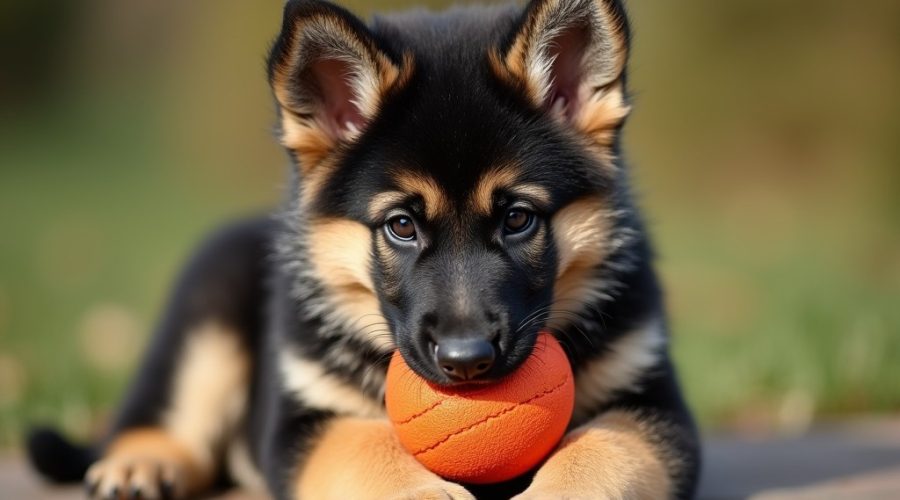





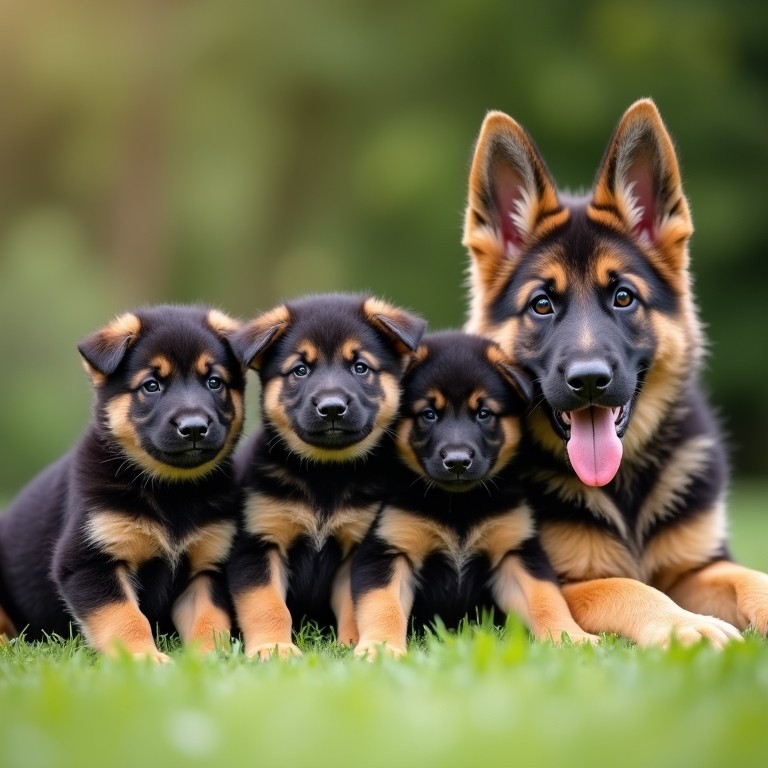
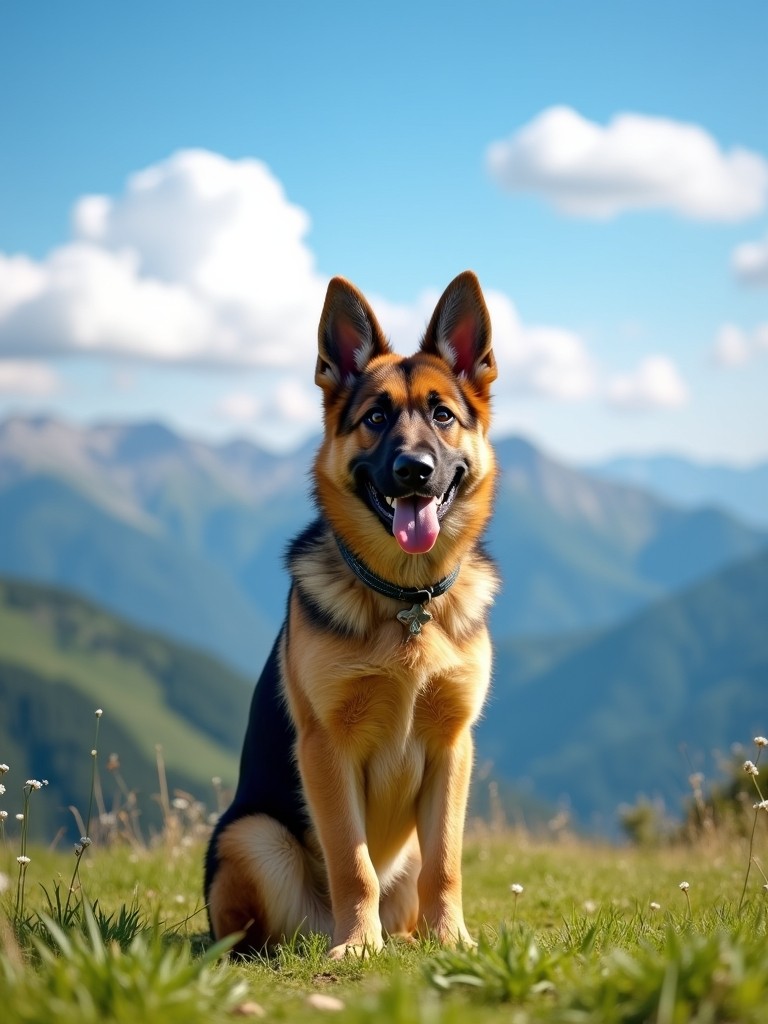
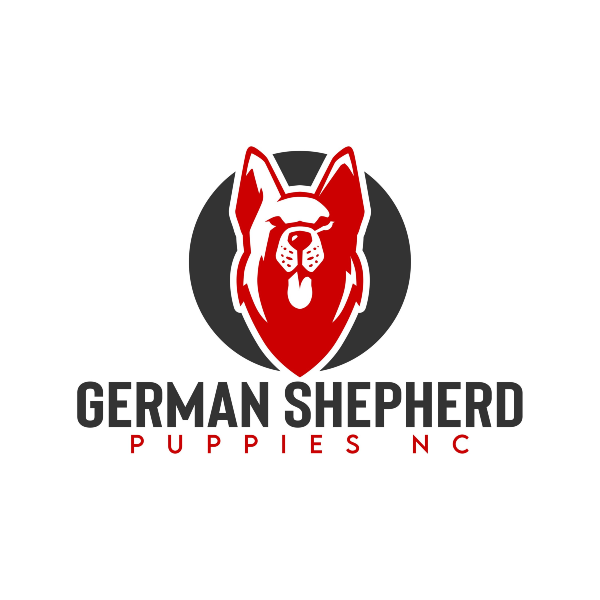


Our Social Media Channels